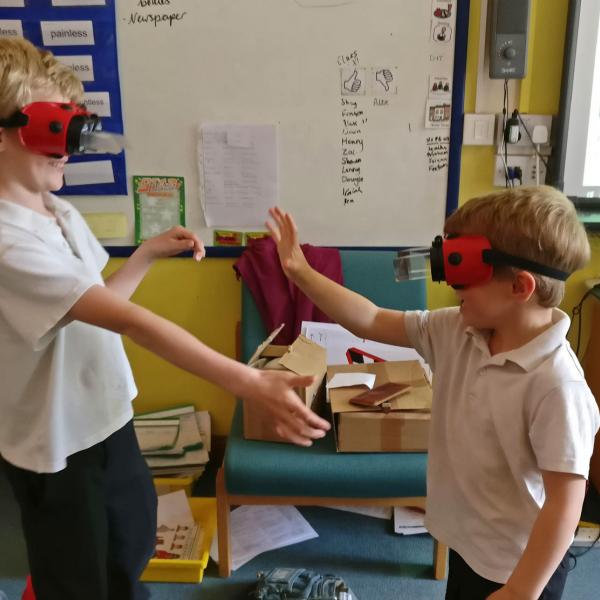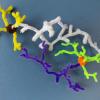Two heteromeric Kv1 potassium channels differentially regulate action potential firing.
Low-threshold voltage-gated potassium currents (I(LT)) activating close to resting membrane potentials play an important role in shaping action potential (AP) firing patterns. In the medial nucleus of the trapezoid body (MNTB), I(LT) ensures generation of single APs during each EPSP, so that the timing and pattern of AP firing is preserved on transmission across this relay synapse (calyx of Held). This temporal information is critical for computation of sound location using interaural timing and level differences. I(LT) currents are generated by dendrotoxin-I-sensitive, Shaker-related K+ channels; our immunohistochemistry confirms that MNTB neurons express Kv1.1, Kv1.2, and Kv1.6 subunits. We used subunit-specific toxins to separate I(LT) into two components, each contributing approximately one-half of the total low-threshold current: (1) I(LTS), a tityustoxin-Kalpha-sensitive current (TsTX) (known to block Kv1.2 containing channels), and (2) I(LTR), an TsTX-resistant current. Both components were sensitive to the Kv1.1-specific toxin dendrotoxin-K and were insensitive to tetraethylammonium (1 mm). This pharmacological profile excludes homomeric Kv1.1 or Kv1.2 channels and is consistent with I(LTS) channels being Kv1.1/Kv1.2 heteromers, whereas I(LTR) channels are probably Kv1.1/Kv1.6 heteromers. Although they have similar kinetic properties, I(LTS) is critical for generating the phenotypic single AP response of MNTB neurons. Immunohistochemistry confirms that Kv1.1 and Kv1.2 (I(LTS) channels), but not Kv1.6, are concentrated in the first 20 microm of MNTB axons. Our results show that heteromeric channels containing Kv1.2 subunits govern AP firing and suggest that their localization at the initial segment of MNTB axons can explain their dominance of AP firing behavior.
2002.J. Neurosci., 22(16):6953-61.
2016.J. Neurosci., 36(45):11489-11495.

